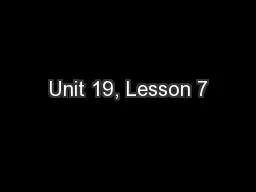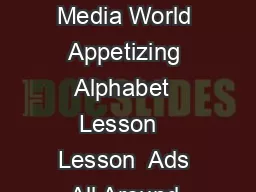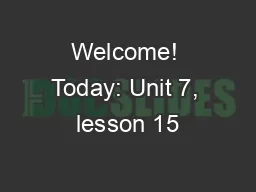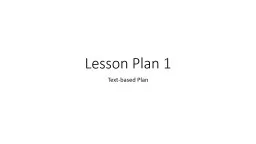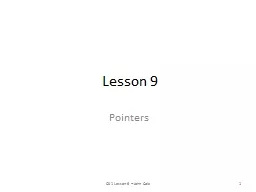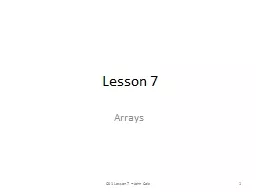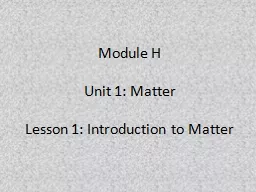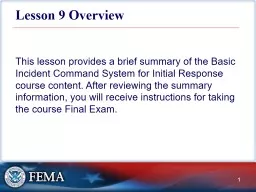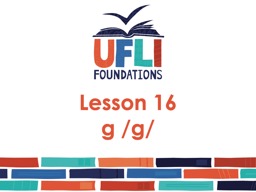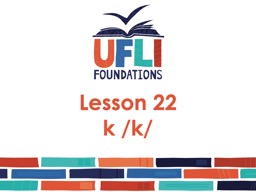PPT-Unit 19, Lesson 7
Author : natalia-silvester | Published Date : 2016-06-01
February 9 2011 1 Listening for Word Parts Prefixes Look for prefixes Fore mid mis over 1 Midbrain 6 Foreman 2 Foresee 7 Overboard
Presentation Embed Code
Download Presentation
Download Presentation The PPT/PDF document "Unit 19, Lesson 7" is the property of its rightful owner. Permission is granted to download and print the materials on this website for personal, non-commercial use only, and to display it on your personal computer provided you do not modify the materials and that you retain all copyright notices contained in the materials. By downloading content from our website, you accept the terms of this agreement.
Unit 19, Lesson 7: Transcript
February 9 2011 1 Listening for Word Parts Prefixes Look for prefixes Fore mid mis over 1 Midbrain 6 Foreman 2 Foresee 7 Overboard. Discuss native speaker pronunciation gonna Stress that they dont have to do it but they need to be able to understand it Use selected items from textbook exercises for student practice and to identify and clear up any confusion Strategy Presentation To earn chat: . What were citizens of the polis NOT expected to do?. serve on juries. fight to defend the polis. obey the laws they liked. be devoted to the polis. Unit 7 Lesson 15. Materials:. Microphone. Lesson 2- Lexical Approach. Lesson 3- Task-based . Lesson Plan 1 . Text-based Plan . Presentation Phase . Type of text . So you’re in Thunder Bay what do you do now?. *****PICTURES WILL BE INSERTED HERE . 1. Pointers in Wonderland. The name of the song is called ‘. Haddock’s Eyes’.” . “Oh, that’s the name of the song, is it?” Alice said, trying to feel interested. “No, you don’t understand,” the Knight said, looking a little vexed. “That’s what the name of the song is . 1. Arrays Hold Multiple Values. Array. : variable that can store multiple values of the same type. Values are stored in adjacent memory locations. If a variable is the name of a memory location, an array is the name of a group of them.. Identify the basic functions of Web browsers. Install a Web browser. Identify the components of Web addresses. Describe the functioning of a Web browser. Identify considerations in selecting a browser. What are some common themes that you have noticed-that we have discussed in every unit thus far (topics that seem to be shared by all the people we have studies about so far)?. How do you think the character of people hundreds of years ago compares to the character of the modern world? What factors do you think play a role in the difference/changes?. Module H Unit 1: Matter Lesson 1: Introduction to Matter Matter - anything that has mass and takes up space. Matter makes up the materials around you. Mass - the amount of matter in an object. Even air has mass. 4b.4. The Triple-Note-Tote. Topic. Details. Mnemonic. Triple-Note-Tote. Objectives. Recognize the importance of taking effective notes for remembering information. Organize ideas from an article using the Triple-Note-Tote. 1. Lesson 1: Course Overview (NIMS & ICS Review). . NIMS provides the Nation with a standardized framework for incident management.. ICS, a part of NIMS, is a management system used to meet the demands of incidents large or small, planned or unplanned.. g /g/. u. c. d. o. n. i. f. p. t. s. m. a. g. got. gas. g. dog. tag. g. g. tug. gap. fog. mug. dog. tag. pig. got. gas. gum. gut. Insert brief reinforcement activity and/or transition to next part of reading block.. k /k/. s. e. b. g. u. c. d. o. n. i. f. p. t. m. a. c. k. kid. kit. k. k. s. s. . k. . i. . p. m. . a. . s. . k. c. k. kit. task. kin. kit. ask. kids. skim. skit. skin. desk. Insert brief reinforcement activity and/or transition to next part of reading block.. Leading TV Unit Manufacturer in Pune Innovative Designs, Superior Quality at Adeetya's Kitchen & Furniture https://adeetyas.com/tv-unit-manufacturers-in-pune.php
Download Document
Here is the link to download the presentation.
"Unit 19, Lesson 7"The content belongs to its owner. You may download and print it for personal use, without modification, and keep all copyright notices. By downloading, you agree to these terms.
Related Documents

